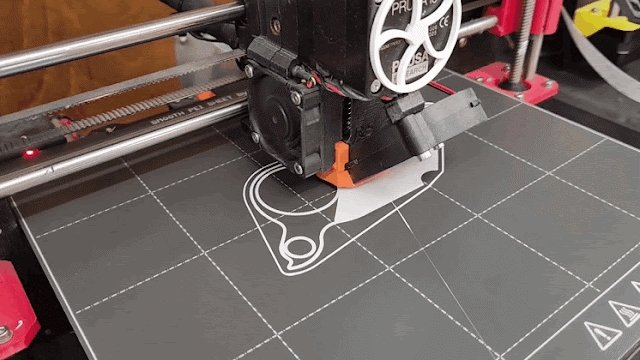Over the last two weeks, I've made progress fabricating parts for the new front end suspension. Most of the thickest parts are done. Those take the longest to make on the Tormach. For example, each front bracket took 7 hours to machine from a solid block.
After making the second front bracket, I checked its fit and discovered that the far side of the large hole was milled slightly smaller than the near side. This happened because I had to use an extra long end mill to reach everything.
The free end of the tool flexes from the cutting force created. The longer the end mill, the more the end deflects. I had to slow down the travel speed considerably to minimize the forces acting on the end mill, but that did not remove the flex entirely. To fix it, I flipped the part over and widened the hole from the other side using a shorter end mill.
After the second front bracket was finished, I made one of two rear hanger brackets. It's shaped like a saddle instead of a circle so we can mount it further in on the truss.
The final test fit for the brackets was great. I haven't drilled mounting holes into the brackets yet. That will happen when we're ready to install the new front suspension.
We've Got Arms
While the Tormach sculpted away, I continued welding together the suspension arms that attach the wheels to the central truss. I used steel instead of aluminum for increased strength, but mostly because I had access to free steel and virgin aluminum is expensive. My welds are still ugly, but I think I've gotten 5% better. 😎 Out of 8 arms, I only destroyed, and had to remake, one arm.
After welding the arms together, I re-machined the inside diameter of each tube to remove deformations caused during welding. This will make sure that bearings will fit into the legs.
With the two front brackets, one rear bracket, eight arms, and the two bearing plates fabricated, the front suspension build is over 33% complete. For the Glory!



















